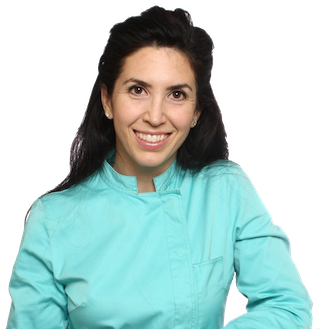Dr. Malisa Gambacorta

About me
I earned my Doctor of Dental Surgery Degree from the University of
Toronto. As a general dentist I provide services such as fillings, root
canals, extractions, crowns and bridges, implants, dentures, and minor
surgeries.
I enjoy helping people get through a situation that they aren’t
necessarily looking forward to. I am currently a member of: the Toronto
Crown and Bridge Study Club, the International Academy of Oral Medicine
and Toxicology, and the International Affiliation of Tongue Tie
Professionals.
I was a dentist before I was a mom. Then motherhood happened, and it
changed the way I see dentistry. I looked at the way my kids were
developing and the sleep, breathing and behavioural problems they were
having, and I found ways that I could help them as a parent and as a
dentist. I believe there is more to dentistry than just teeth. For me,
dentistry is an integrative approach and a means by which we can achieve
greater well-being.
Tongue Tie
A Tongue tie is a condition that is present at birth that restricts the
tongue’s ability to move as it normally should. With a tongue-tie there
is a tight band of tissue that tethers the bottom of the tongue to the
floor of the mouth; this tight band may be visible or not. The medical
term is ankyloglossia and it is considered a hereditary condition.
All people are born with some of this tissue, but for approximately
5-12% of newborns, it is so tight that they cannot move their tongues
freely. This can affect a baby’s ability to breastfeed and lead to poor
latch, nipple pain and trauma, decreased milk intake and a decline in
milk supply over time. In older children and adults a tongue tie can
lead to eating difficulties, inability to clean the teeth with the
tongue, forward head posture (which can cause neck and back
discomfort/pain) and mouth breathing. Tongue tie revisions (called
frenectomies) remove the tight tissue under the tongue or upper lip.
Airway Centric®️ Dentistry
When my son started suffering from fragmented sleep and stopped growing
at 18 months I was motivated to learn about sleep related breathing
issues and solutions that I could provide as a dentist. I learned about
appliances that I could make for him and I made several appliances that
supported his airway until we were able to get through the medical
system and get him a sleep test (aka polysonograph or PSG) which was a
process that took years. Throughout this process I learned a number of
things that I didn’t know.
I didn’t know that a person’s tongue should rest on the roof of his or
her mouth; a thing that is referred to as “proper oral resting posture”.
I didn’t know that the presence of the tongue on the roof of the mouth
from birth is what helps to form the roof of the mouth (aka palate). A
low and broad palate is what gives the nose a good amount of air space
and helps the upper jaw bone to grow round (to accomodate all the teeth)
instead of v-shaped. I was already a dentist and I didn’t know how the
face bones, head bones, and airway develop properly.
I didn’t know that breathing through the nose is a crucial part of this
development. I didn’t know that there were so many things that I could
have done to help his airway development starting from when I was
pregnant and continuing after he was born. Now, it’s my passion and goal
to inform my patients about proper airway development and what we can do
as dentists to help guide this process.
So what exactly is Airway Centric Dentistry? It is a term that was
coined by Dr. Michael Gelb and Howard Hindin and refers to the
recognition and management of a compromised airway. Airway Centric
Orthodontics refers to orthodontic therapy that does not hold back the
bones of the face but rather encourage the forward growth of face bones
around a large, unobstructed airway.
Thank you for your message.
I will respond to you as soon as possible.
© 2022 Dr. Malisa Gambacorta

